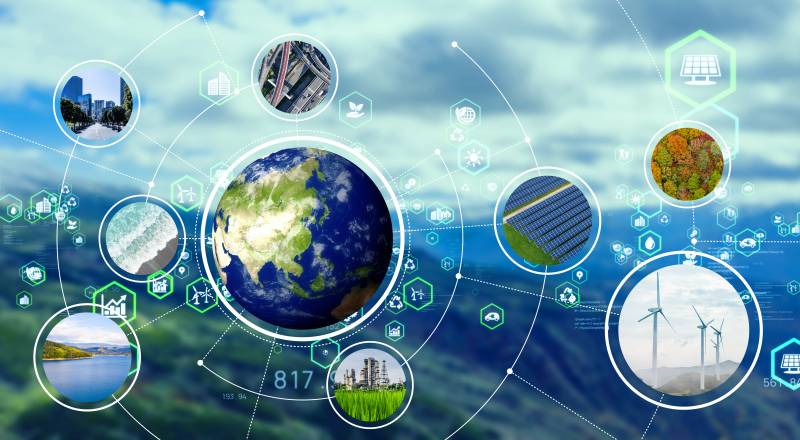Science media professionals faced unique challenges covering the beginning of the COVID-19 pandemic. Early coverage of the pandemic and specific factual information about the virus and how to avoid contracting it was slim as little was known about COVID-19. As opinions and recommendations grew from health professionals and government agencies, communities were quickly burdened with too much information; it was difficult to sort through factual information and speculation. Adding to this confusion, many lacked the necessary knowledge to understand the basics about viruses, what they are, how they behave and treatments to stop rising infections.
With funding from the National Science Foundation, media researchers from Texas Tech University and evaluators at Rockman et al, KQED, a public media organization serving the San Francisco Bay Area, set out to understand the COVID-19 information needs of its community to assist KQED science journalists with their health coverage. The project, Influencing Young Adults’ Science Engagement and Learning with COVID-19 Media, conducted six studies to identify COVID-19 and health knowledge gaps, understand COVID-19 misinformation narratives on social media, know how best to communicate health and science information to the public, and conduct an in-depth process evaluation to capture best practices for crisis reporting. Our Rockman et al evaluator also authored a series of posts on our learnings from our crisis reporting.
Below is a summary of the work of the collaboration, our top takeaways and recommendations, and a slide deck covering our work and findings from May 2020 to April 2021. All of the studies can be found here on our kqed.org website and on informalscience.org.
Misinformation, knowledge gaps and social media testing
The team conducted several “Knowledge Gap” and social media research studies to address our first research question: How could COVID-19 coverage be designed to best inform, engage and educate millennials and younger audiences about the science of virus transmission and prevention? This research included:
A Twitter Misinformation study to understand major COVID-19 misinformation narratives on Twitter discussed in the San Francisco Bay Area, and how they compared to the United States as a whole from March 1 - Oct. 20, 2020.
Knowledge Gap studies
- Mask Wearing study: We examined the effectiveness of two messaging strategies — scientific consensus messaging and infographic visuals — that can be used to encourage mask-wearing and support for mask-wearing policies. Infographic visuals were prefered over scientific messaging.
- Germ Knowledge studies: We looked at knowledge gaps in the general public, not only surrounding misinformation about COVID-19, but also viruses and bacteria. We found that young adults have limited or mis-understanding of viruses and bacteria in comparison to older generations.
- Conceptual Mapping study: A little over a year into the pandemic, we conducted interviews and mapped responses with the aim of discovering more about what sorts of findings about COVID-19 are still prevalent.
Social Media testing
The KQED Science Engagement team applied findings from our Knowledge Gap studies to develop social media posts that addressed trending knowledge gap topics during the earlier stages of the pandemic. The team created fun and informative social distancing and mask use graphics to communicate the importance of these behaviors during the pandemic.
- The key takeaways for news organization include:
Conduct research on knowledge gaps and misinformation and then address those gaps and misunderstandings in your reporting. Focus on widely held views of misinformation or those that will affect decision-making. - Consider audience demographics (age, political ideology, income, race/ethnicity, etc.) when communicating health/science messages and designing effective engagement strategies.
- Use visuals and social media to engage millennial or Gen Z audiences and target “missing” audiences (audiences that don’t currently engage in your content). We found that GIFs were the most engaging, followed by a short video, and then a simple image.
- Use infographics or visuals to communicate complex ideas during a health or scientific crisis, especially to millennial or Gen Z audiences who displayed a larger knowledge gap in understanding the basics about viruses and bacteria.
- Verify and report information on necessary and unnecessary health practices.
- Create simple media explainers: mRNA technology, difference between emergency use and regular authorization for vaccines.
- Make consistent efforts over time to counter false information. Combating misinformation takes time.
Professional Knowledge, Crisis Reporting and Evaluation
KQED and Texas Tech advanced professional knowledge in the journalism and science communication fields around crisis reporting through a study conducted by Scott Burg of Rockman et al. Rockman gathered data between October 2020 - May 2021, interviewed KQED Science staff and participated in virtual observations of KQED project and related staff meetings to answer our second research question:
Can KQED develop a more efficient process of disaster reporting that responds to both constantly updating information and changing audience needs, which can be used and expanded upon by media outlets?
Conclusions and key takeaways from the study include:
- Disasters have to be covered holistically, not as single disconnected events.
- Identify, cover, explain and explore the root causes and long-term impacts of these catastrophic events.
- Journalists need to establish and sustain richer relationships with impacted communities, and focus on solution-based reporting.
- Hire news staff that reflect the community.
- Use a variety of information platforms for communicating with your audience — broadcast, web, social media and increase the use of engagement strategies.
- Provide resources for real time fact-checking.
As a result of this study, news organizations and media makers now have a deeper understanding of what types of media (social, online, video, audio) and what communications factors (storytelling style, visuals, length, platform, etc.) influence science learning and engagement around COVID-19 for young audiences. The project also provided media professionals a much-needed chance to reflect on disaster reporting, which will inform future planning and effectiveness.
